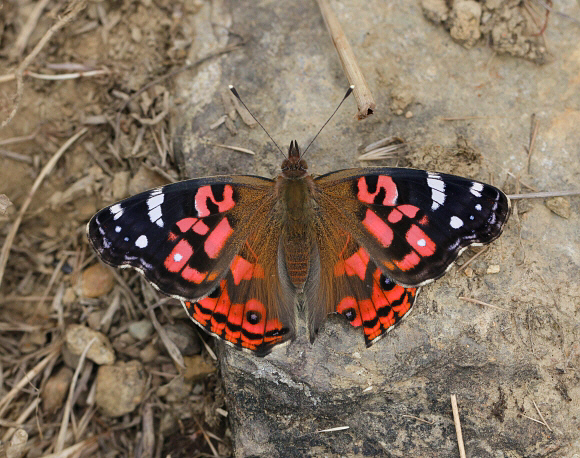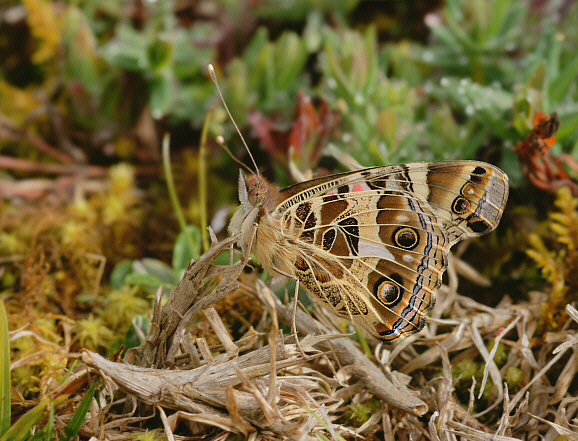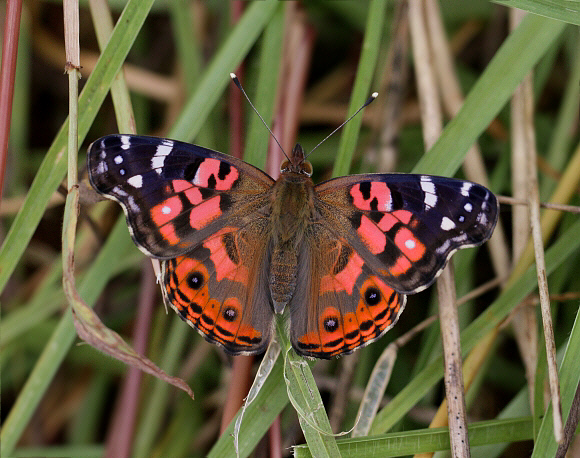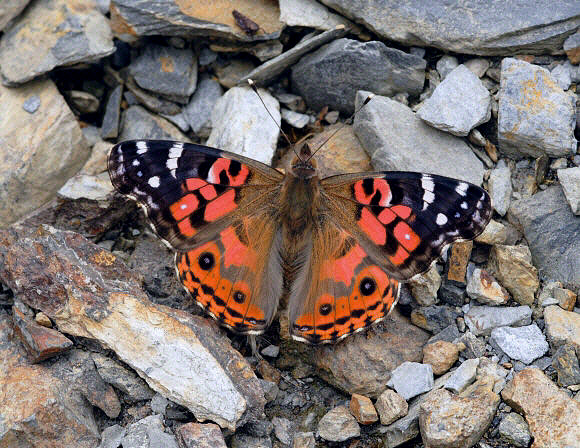
Introduction
The genus Vanessa comprises of about 20 species and includes the most widespread butterfly in the world – the Painted Lady Vanessa cardui which occurs in Europe, Asia, Africa, Australia and across North America. There are 9 other species found in the Americas: myrinna from Brazil, braziliensis from Brazil and Peru, carye from Argentina, terpsichore from Chile, altissima from Peru and Bolivia, tameamea from Hawaii, annabella from the western USA, virginiensis which is distributed from the USA to Colombia, and the Red Admiral atalanta which occurs across Europe, Asia, north Africa, and throughout North America.
All Painted Lady species have a similar pattern of pinkish-orange, black and white on the upperside, and have cryptic undersides marbled in olive and grey, with a row of post-median ocelli of varying sizes on the hindwings.
Vanessa braziliensis is arguably the most beautiful of the Painted Ladies, being a particularly vivid shade of pink. The butterfly is found in Brazil, Ecuador, Peru, Bolivia, Venezuela, Paraguay, Uruguay and northern Argentina.

Habitats
This species occurs in a wide variety of disturbed habitats, including open grassland and pastures, arid rocky areas, and cloudforest / grassland transition zones. It is normally found at altitudes between about 1800-3500 metres.
Lifecycle
I do not have any information regarding the lifecycle of braziliensis. The eggs of the closely related virginiensis are whitish. They are laid singly on a wide range of plants including Antennaria, Senecio and Artemesia ( Asteraceae ), Antirrhinum ( Scrophulariacae ) and Malva ( Malvaceae ). The larvae are dark, usually mottled with blackish and bear short whorled spikes on the back and sides. They live solitarily within a silken web spun around the upper leaves and stem of the foodplant, leaving a mass of frass adhering to the silk. The pupae of Vanessa species are greyish, and slightly lustrous. They are suspended by the cremaster within the silk nests spun by the larvae.

Adult behaviour
Both sexes tend to be seen in groups of up to a dozen, hill-topping in sheltered grassy glades, or basking on rocks or bare soil in the vicinity of nectar sources. They are always alert to the presence of intruding humans. If disturbed they usually resettle a few metres away, but often return to their original basking place once any danger has passed. Normally they bask with wings fully outspread, but when clouds temporarily obscure the sun and lower the temperature they will sit on rocks or among grasses with the wings closed.
In late afternoon the butterflies seek roosting sites, and typically spend the night hanging from the leaves or stems of tallish herbaceous plants.

